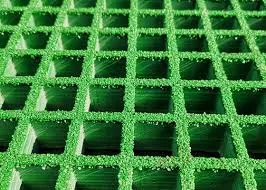
-
 Afrikaans
Afrikaans -
 Albanian
Albanian -
 Amharic
Amharic -
 Arabic
Arabic -
 Armenian
Armenian -
 Azerbaijani
Azerbaijani -
 Basque
Basque -
 Belarusian
Belarusian -
 Bengali
Bengali -
 Bosnian
Bosnian -
 Bulgarian
Bulgarian -
 Catalan
Catalan -
 Cebuano
Cebuano -
 China
China -
 China (Taiwan)
China (Taiwan) -
 Corsican
Corsican -
 Croatian
Croatian -
 Czech
Czech -
 Danish
Danish -
 Dutch
Dutch -
 English
English -
 Esperanto
Esperanto -
 Estonian
Estonian -
 Finnish
Finnish -
 French
French -
 Frisian
Frisian -
 Galician
Galician -
 Georgian
Georgian -
 German
German -
 Greek
Greek -
 Gujarati
Gujarati -
 Haitian Creole
Haitian Creole -
 hausa
hausa -
 hawaiian
hawaiian -
 Hebrew
Hebrew -
 Hindi
Hindi -
 Miao
Miao -
 Hungarian
Hungarian -
 Icelandic
Icelandic -
 igbo
igbo -
 Indonesian
Indonesian -
 irish
irish -
 Italian
Italian -
 Japanese
Japanese -
 Javanese
Javanese -
 Kannada
Kannada -
 kazakh
kazakh -
 Khmer
Khmer -
 Rwandese
Rwandese -
 Korean
Korean -
 Kurdish
Kurdish -
 Kyrgyz
Kyrgyz -
 Lao
Lao -
 Latin
Latin -
 Latvian
Latvian -
 Lithuanian
Lithuanian -
 Luxembourgish
Luxembourgish -
 Macedonian
Macedonian -
 Malgashi
Malgashi -
 Malay
Malay -
 Malayalam
Malayalam -
 Maltese
Maltese -
 Maori
Maori -
 Marathi
Marathi -
 Mongolian
Mongolian -
 Myanmar
Myanmar -
 Nepali
Nepali -
 Norwegian
Norwegian -
 Norwegian
Norwegian -
 Occitan
Occitan -
 Pashto
Pashto -
 Persian
Persian -
 Polish
Polish -
 Portuguese
Portuguese -
 Punjabi
Punjabi -
 Romanian
Romanian -
 Russian
Russian -
 Samoan
Samoan -
 Scottish Gaelic
Scottish Gaelic -
 Serbian
Serbian -
 Sesotho
Sesotho -
 Shona
Shona -
 Sindhi
Sindhi -
 Sinhala
Sinhala -
 Slovak
Slovak -
 Slovenian
Slovenian -
 Somali
Somali -
 Spanish
Spanish -
 Sundanese
Sundanese -
 Swahili
Swahili -
 Swedish
Swedish -
 Tagalog
Tagalog -
 Tajik
Tajik -
 Tamil
Tamil -
 Tatar
Tatar -
 Telugu
Telugu -
 Thai
Thai -
 Turkish
Turkish -
 Turkmen
Turkmen -
 Ukrainian
Ukrainian -
 Urdu
Urdu -
 Uighur
Uighur -
 Uzbek
Uzbek -
 Vietnamese
Vietnamese -
 Welsh
Welsh -
 Bantu
Bantu -
 Yiddish
Yiddish -
 Yoruba
Yoruba -
 Zulu
Zulu
Benefits and Applications of Pultruded Fiberglass Grating in Various Industries
Pultruded Fiberglass Grating A Comprehensive Overview
Pultruded fiberglass grating has emerged as a revolutionary material in various industries due to its distinctive properties and applications. This article delves into the characteristics, benefits, and applications of pultruded fiberglass grating, highlighting its significance in modern construction and industrial settings.
What is Pultruded Fiberglass Grating?
Pultruded fiberglass grating is a composite material made from glass fiber reinforced plastic (GRP). The manufacturing process involves the pultrusion technique, where continuous strands of fiberglass are drawn through a resin bath and then heated and cured to form a rigid, strong structure. The result is a lightweight, durable, and corrosion-resistant product that is ideal for a range of applications, from flooring to structural components.
Key Characteristics
1. Corrosion Resistance One of the most significant advantages of pultruded fiberglass grating is its exceptional resistance to corrosion. Traditional metal grating can rust and deteriorate over time, especially in harsh environments. In contrast, fiberglass grating withstands exposure to chemicals, moisture, and UV radiation, making it a preferred choice for industrial applications.
2. Lightweight Compared to steel and other materials, fiberglass grating is considerably lighter, which simplifies transportation and installation. This property allows for easier handling, reducing labor costs and the need for heavy machinery during installation.
3. Strength and Durability Despite its lightweight nature, pultruded fiberglass grating exhibits impressive strength. The composite material can bear substantial loads without deforming, making it suitable for heavy-duty applications. Its durability ensures a long lifespan, minimizing the frequency of replacements.
4. Non-Conductive Fiberglass is an excellent insulator, which makes pultruded grating ideal for electrical applications and environments where safety from electrical hazards is a concern. Users can work with confidence around electrical installations without the risk of conductivity.
pultruded fiberglass grating

5. Slip Resistance Many pultruded fiberglass gratings come with textured surfaces, offering enhanced slip resistance. This feature is particularly beneficial in environments exposed to moisture or chemicals, ensuring safety for personnel walking or working on these surfaces.
Applications of Pultruded Fiberglass Grating
The versatility of pultruded fiberglass grating allows it to be utilized in various applications, including
1. Industrial Flooring Pultruded fiberglass grating is widely used for catwalks, platforms, and walkways in industrial settings. Its corrosion resistance and slip-proof surfaces make it particularly effective in chemical plants, wastewater treatment facilities, and food processing areas.
2. Marine Applications The marine environment is notoriously harsh on materials due to saltwater exposure. Pultruded fiberglass grating, with its ability to resist corrosion, is perfect for docks, piers, and boat ramps, ensuring longevity and safety in these settings.
3. Architectural Features Beyond industrial use, fiberglass grating can also be found in buildings as decorative architectural elements. It can be used for railing systems, balcony flooring, and various aesthetic applications where both beauty and functionality are a priority.
4. Transportation Infrastructure It is increasingly being adopted in transportation infrastructure, such as airport and railway applications, for walkways, viewing platforms, and maintenance access, where strength and weight considerations are critical.
Conclusion
Pultruded fiberglass grating represents a significant advancement in material technology, combining strength, lightweight characteristics, and corrosion resistance. Its diverse applications across multiple industries demonstrate its importance in modern construction and infrastructure development. As industries continue to seek efficient, safe, and durable materials, pultruded fiberglass grating is poised to play an increasingly pivotal role in future engineering and architectural endeavors. Investing in this innovative solution not only enhances safety and usability but also contributes to long-term cost savings in maintenance and replacement.









